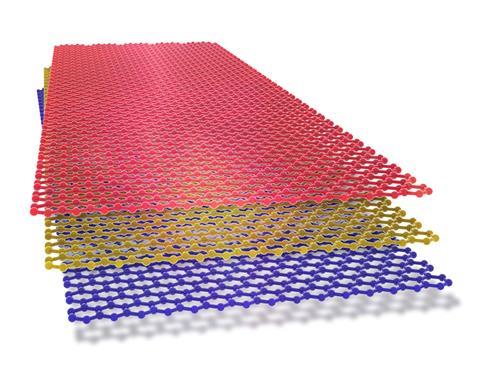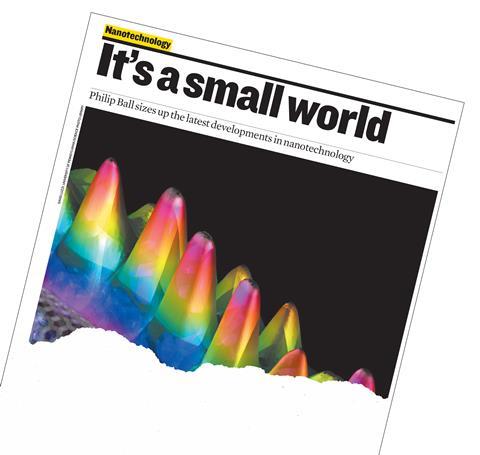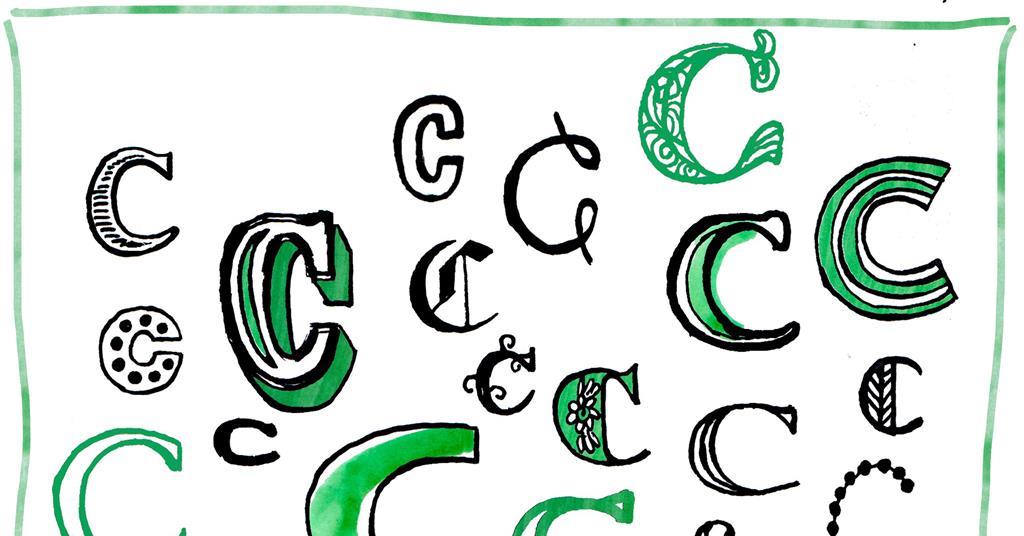It’s exhausting to not love a part as explicit as carbon – nevertheless might chemists’ adoration be a problem? No completely different issue is versatile ample to help make molecules enabling life, whereas moreover forming a ravishing and exhausting gem like diamond. ‘If carbon had been a person, it might be anybody that has many faces and guises,’ says provides scientist Eva Zurek from the Faculty at Buffalo inside the US.
Zurek considers the 60 carbon atoms forming the football-shaped truncated icosahedron of buckminsterfullerene an icon. The development’s discovery in 1985 gained Harry Kroto, Robert Curl and Richard Smalley the 1996 Nobel prize in chemistry. Later, Smalley and scientists like Mildred Dresselhaus urged stretching these buckyballs into tubes. Sumio Iijima and Toshinari Ichihashi at NEC Firm in Tsukuba, Japan, found such carbon nanotubes when looking buckyballs in soot with an electron microscope in 1991. Nanotubes boast tensile vitality stronger than steel, and extreme electrical and thermal conductivity.

Every carbon allotropes precipitated good public curiosity. Zurek says nanotubes and buckminsterfullerene turned superstars on account of ‘they’re just so beautiful and geometric’. ‘Everyone can relate to that aesthetic,’ she offers.
For a whole lot of years the one carbon allotropes individuals knew had been diamond and graphite. Nevertheless inside the twentieth century scientists typically reported new and unusual sorts, along with these superstars. In 2004, the equivalent 12 months the Royal Society of Chemistry launched Chemistry World, scientists found two extra new nanometre-sized allotropes of carbon, in some other case commonly known as nanocarbons. One was carbon nanodots, fluorescent carbon nanoparticles which might be decrease than 10nm in measurement, discovered when purifying nanotubes. The alternative, further famously, was graphene, most incessantly thought to be single sheets of carbon atoms organized in a honeycomb pattern. Sometimes known as a ‘shock supplies’, graphene gained its discoverers Andre Geim and Kostya Novoselov the Nobel prize in physics in 2010.
Within the current day, scientists have predicted over 1600 utterly completely different carbon allotropes, however everyone knows little about them. Have chemists been carried away by their romance with carbon? We’d even have requested the equivalent issue sooner than theoretical prospects proliferated. The challenges in controllably making graphene and carbon nanotubes indicate they’re exhausting to utilize extensively. Along with being versatile, carbon seems to be fickle – nevertheless considering why it’s fickle raises important questions.
Armed for consideration
How electrons arrange themselves spherical carbon atoms make a fascinating muse for chemists, Zurek explains. ‘It’s very versatile,’ Zurek says. ‘There may be an infinite number of forms of carbon.’
Two electrons contained in carbon’s 2s-orbital might be a part of two in its 2p orbitals, forming three numerous sorts of hybrid orbitals, enabling single, double and triple bonds. Kenichiro Itami from the Nagoya Faculty in Japan, likens numerous sorts of bonds to people holding arms. Like most people, sp hybridised carbons have two arms. Nevertheless sp2 hybridised ones have three, and sp3 hybridised ones have 4. Consistent with Itami, the important issue about these utterly completely different carbon people is that they preserve on tightly, even in many different preparations, creating all types of varied angles between bonds. ‘That’s what makes carbon utterly completely different from completely different elements,’ he stresses.

Theoretical chemists explored single layers of sp2 hybridised carbons as early as 1947. However they thought that such layers might be unstable, consistent with Ashok Keerthi from the Faculty of Manchester, UK, and the shut by Nationwide Graphene Institute. ‘The invention of graphene in 2004 [was] a breakthrough,’ he says. ‘Its extraordinary properties had been a monumental shock – its mechanical vitality, electrical conductivity, thermal properties – and all current in a cloth just one atom thick. It’s opening new avenues for evaluation, not only for carbon-based provides, nevertheless to many alternative two-dimensional provides.’
Magic angle graphene may be very promising, says Zurek. In experiments, scientists have put sheets of graphene on excessive of each other, oriented at utterly completely different angles. Inside the best-known occasion, scientists rotated the very best sheet by 1.08° as compared with the underside one. ‘Plenty of years prior to now, people did experiments displaying that you could be get distinctive superconductivity,’ Zurek says. However she notes that this evaluation isn’t extensively talked about previous scientific circles: ‘The language that’s used for it is not as merely accessible.’ Within the meantime, basically probably the most inspiring forms of carbon will probably be troublesome to entry just about.
We had been promised home elevators
Whereas graphite and diamond every occur naturally and will probably be an increasing number of efficiently synthesised, completely different carbon sorts are tough. Itami notes that it’s not simple to make nanotubes or graphene ‘in a structurally uniform strategy’. It’s significantly troublesome for nanotubes, which can differ in development, diameter and measurement after which might’t be readily separated. That’s vastly disappointing for science fiction followers, who might want to use nanotubes’ exceptionally extreme tensile vitality for a ‘home elevator’. Impressed by the 1979 Arthur C Clarke story Fountains of Paradise, this concept tethers an space station to Earth with a cable fabricated from one factor like carbon nanotubes and makes use of a module to shift people and cargo between them. Graphene nanoribbons, which might be used to kind novel composite provides or battery electrodes, bear from an equivalent separation disadvantage.
Itami’s group has taken steps within the course of resolving this ‘mixture disadvantage’ in nanotubes by way of its work on single molecule nanocarbons. His group has synthesised carbon nanorings of cycloparaphenylene, made solely of benzene rings associated by single carbon bonds, equal to a single strip sliced off a carbon nanotube. The portions they’ve made are smaller than have been achieved for graphene, nevertheless are ‘pretty close to the fullerenes’, Itami says. The researchers have moreover used nanoring buildings as templates in order so as to add atoms to, making a tiny amount of complete nanotubes.

Keerthi likewise works on a bottom-up synthesis method making uniform graphene nanoribbons from small molecule establishing blocks. ‘We’re capable of administration the width and edge development very precisely, nevertheless the lengths differ from quite a few tens to tons of of nanometres,’ Keerthi says. Whereas not completely uniform, the tactic can administration nanoribbon edge buildings, which defines their digital and optical properties, he explains. That means nanoribbons can behave as a semiconductor, not like larger graphene sheets, which might be conductors.
Such progress on graphene is encouraging. But when we battle with basically probably the most well-known new carbon allotrope, which governments have invested billions into researching, what hope do the quite a few a lot much less well-known ones have? Davide Proserpio from the Faculty of Milan, Italy, is among the many many best-placed people to ask.
How are we going to make this?
With Artem Kabanov from Samara State Technical Faculty in Russia, Proserpio tracks hypothetical three-dimensional carbon allotropes. In 2016, they prepare the Samara Carbon Allotrope Database (Sacada) after utterly completely different publications predicted the equivalent kind of carbon. ‘Too many hypothetical carbon allotropes have been rediscovered, or increased recomputed, many events, so a database would help avoid such repetition,’ explains Proserpio. Nevertheless since they prepare Sacada, the sector has exploded, he offers. ‘We started from about 250 allotropes in 2016, to achieve, in February 2024, the huge number of 1661, all with out considering 2D allotropes like graphene. New ones are proposed inside the literature every month.’
For a lot of, their existence hasn’t been examined. Itami calls this the ‘unsynthesised disadvantage’. ‘The question is, how are we going to make this?’ he says.
Proserpio says that the proportion of hypothetical sorts which had been made is ‘tiny’. ‘There’s quite a bit speculation, little secure proof,’ he says. ‘If we’d work out strategies to make them, they may have some attention-grabbing properties,’ Proserpio offers. Scientists ‘would love them, within the occasion that they may be made’. Amongst 2D allotropes there could also be proof for graphdiyne, Proserpio notes. This mannequin of graphene has 4 sp carbons alongside some edges that kind two carbon–carbon triple bonds.
Roald Hoffmann from Cornell Faculty, US, a co-author on the paper unveiling Sacada, is anxious by the huge number of unmade hypothetical carbon allotropes. ‘What the explosion means is that precept and enumeration is much, quite a bit easier than precise chemistry,’ Hoffman tells Chemistry World. ‘And there are quite a few underemployed theorists.’
Carbon and on
Further, Hoffmann calls the intriguing cyclocarbon allotropes C16 and C18 – rings made up of alternating single and triple bonds – as ‘of little use inside the lab or market’. ‘One has not provide you with strategies of making moles of them,’ he says. The small rings will most likely be ‘very, very reactive’, Hoffmann offers, to permit them to’t be made in secure kind at atmospheric pressure. Although visualising them, ‘significantly in response sequences, does give us elementary mechanistic information’.
In actuality, plentiful theoretical allotropes pose deeper questions that chemists might increased spend their time considering. Hoffmann notes that basically probably the most regular development of SiC is a diamond-like lattice, with alternating silicon and carbon atoms. SiC has over 100 allotropes which had been made. Why then, Hoffmann asks, does the supposedly versatile carbon have ‘solely two or so well-characterised three-dimensionally extended allotropes which had been made’?
Within the meantime, Zurek elements to 2 causes for the allotrope explosion. One is that researchers have developed strategies by which to predict them, and repeatedly apply that principle. She would favor that researchers publish the design guidelines instead. The second function is that universities and funding firms incentivise lecturers to publish papers. ‘Of us must fulfill diversified publication metrics, and that’s one simple technique to do it,’ she says.
A attainable decision would assemble on Hoffmann’s suggestion, and possibly extra make clear carbon allotropes’ fickleness in being simple to predict nevertheless troublesome to make. Zurek would love scientists to predict straightforward strategies to synthesise the allotropes, and the way in which seemingly synthetic methods are to succeed. It may even be useful if their analysis may prioritise which allotropes to assessment extra. ‘Plenty of the printed works, I don’t assume are that revolutionary,’ Zurek says. ‘Nevertheless then as soon as extra, who’s conscious of? Maybe you will wish to do somewhat quite a bit to go looking out one revolutionary candidate.’
